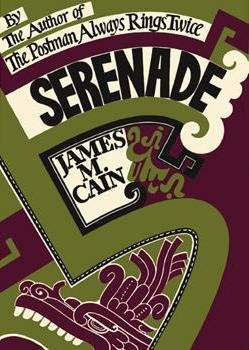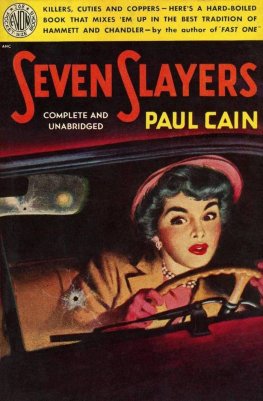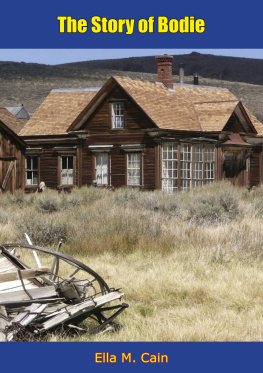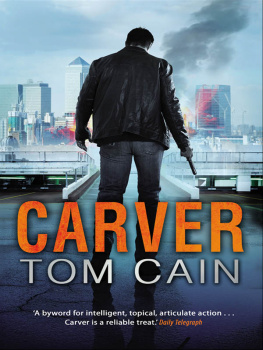A QUIET SUNDAY AFTERNOON
April 8, 1990
A LIGHT BREEZE rolled in from Lake Michigan in picture-perfect Winnetka. Police activity in the Chicago suburb on this overcast Palm Sunday consisted of three speeding tickets, one petty theft, and a man from out of town caught driving with an expired vehicle registration. That was typical. In this upscale village trouble usually involved teens or people just passing through.
Mahlon Lee Bishop, a successful civil attorney, drove from his home in the secluded southern part of town to the eastern end, where his daughter Nancy and son-in-law Richard were living. Lee, who owned their townhouse, intended to put up some shelves in a bedroom closet. That would give him something to do while his wife attended a rehearsal for an amateur production at the community center. Besides, Lee and his wife wanted to make sure their youngest daughter was all right. The family had celebrated Lees sixtieth birthday the night before, but Nancy was ill from her pregnancy and couldnt enjoy the festivities. And now, no one was answering the phone.
As Lee pulled up in the driveway, he saw the couples two cars parked in front of their townhouse. Climbing out, he playfully tugged at the leash of the beagle Nancy and Richard had given him. The small dog eagerly walked ahead of its master to the front door of the one-and-a-half-story brick house.
Lee had a key, but as a courtesy he pressed the buzzer. When no one came to the door he opened it himself and called out from the threshold. No answer.
Perhaps they were at a neighbors. He crossed the room and slid back one of the two large glass patio doors to let his dog run outside on the narrow patch of grass between the house and the six-foot wooden fence. Nancy and Richard were planning to move into a home of their own by the end of the month, so their belongings were packed in old boxes. A card table and folding chairs substituted for furniture.
Almost as soon as Lee closed the patio door, the beagle was beside him again with the excited look of a dog that had discovered something. Only then did Lee notice that some glass had been removed from the second patio door and the sections stacked on the ground. Richard wouldnt do anything like that without asking him, Lee was sure.
The faint sunshine kept the house dim, but a light still burned in the basement. His uneasiness mounting, Lee saw Nancys purse on the floor, with several fifty-and hundred-dollar bills sticking out of a pay envelope. Her credit cards were scattered about.
The house had a terrible stillness. When a faint sound came from upstairs, Lees throat went dry. He reattached the leash to his dog and went up the stairs, calling Nancys name and knocking on the bedroom door. When he opened it, the Langerts cocker spaniel ran out. That explained the sound Lee had heard, but not everything else. He grabbed both dogs and put them in the bedroom to keep them from distracting him as he continued his search.
He returned to the ground floor and started down the basement steps. Thats when he saw Nancy. He could see her arm outstretched on the concrete floor near the bottom stair, her eyes open in death. She was dressed in the same clothes she had worn at the party the previous night.
With a feeling that what he was seeing couldnt be real, Lee took a few more steps and stopped when he saw a pool of blood and the body of his tall, muscular son-in-law. Richard Langerts hands were behind his back, his head to one side, his face caked in blood. Midway between the two bodies lay an axe.
Lee ran up the steps to call the police. Not wanting to disturb any evidence, he put a handkerchief around the receiver before touching it. He dialed 911. I saw my daughter, my daughter and son-in-law are here and theyre dead, he said, almost in hysterics.
Okay, the dispatcher began. I want you to stay on the phone with me. Im going to put you on hold and then Im going to come back and talk to you.
Oh, God, Lee said. How could this happen?
The seconds seemed endless as Lee held the phone and struggled to remain calm. Sir? the dispatcher returned after notifying a patrol car and an ambulance. They should be driving up in just thirty seconds. After all, the townhouse was right across the ravine bridge from the police station.
Half an hour later, newspaper and television news crews rushed to the scene of the only double murder in Winnetka history. Inside, officers found no sign of robbery or any other obvious motive. Although there was an axe, both victims had been shot. Richard, it seemed, was killed execution style.
But none of it made sense. Strangest of all was a clue on one of the metal shelves in the basement. Police found what they believed was a message that Nancy had written in her own blood.
ACKNOWLEDGMENTS
We would like to thank former Winnetka Police Chief Herbert Timm, along with Lieutenant Joseph Sumner, Sergeants Gene Kalvaitis and Patricia McConnell, and Officers Billy Caldwell and Eddie Benoit. They and former task-force members John Fay, William Broten, and Kevin Keel spent hours detailing how the case was assembled. The late director of the Northern Illinois Police Crime Laboratory, Andy Principe, and technician Bob Wilson reenacted for us their work in turning a crime scene into evidence. Dr. Mitra Kalelkar of the Cook County Medical Examiners Office helped recreate the crime for us also.
A fuller understanding of the case was also made possible by Bob Fusel, director of the Chicago Crime Commission; Peggy Anderson, a clerk in the Cook County Circuit Court; Roger Badesch, former director of advertising and public relations at Gloria Jeans Coffee; and Robert Glotz, security director of the Cook County Department of Corrections.
Members of these organizations have helped us on the condition that their names not be used: the Federal Bureau of Investigation office in Chicago, the U.S. Customs Service offices in Chicago and Washington, the Chicago Police Intelligence Division, and the Irish Northern Aid Committee.
AUTHORS NOTE
This is a look behind the headlines of a shocking double murder that had no apparent motive. A police department with just two dozen employees launched a million-dollar investigation that included inquiries at Scotland Yard and Interpol. Because the officers did not know where to start, the private lives of the victims and their families became part of the investigation, only increasing their grief. In time, the personal lives of the killer and his family underwent scrutiny and speculation as police tried to answer the question Why?
And so this account of the killing of Richard and Nancy Langert is very much the story of three families before and after the crime. No relative wished to provide information for this book. We understand their pain and respect their desire for privacy. But a number of friends of the victims and the killer shared their memories. Other personal information came from the trial, reports obtained through the Freedom of Information Act, and documents made available as a result of a civil suit filed by the Bishop family, the family of one of the victims.
Dialogue has been recreated only from these sources and interviews with at least one person involved. Names that have been changed are marked with an asterisk the first time they are used. Scenes reconstructed from physical evidence have been verified by police and medical experts as reasonable accounts of what may have happened.
We also wish to acknowledge the contributions of three journalists who provided assistance during the early stage of this research: Jessica Seigel, reporter for the Chicago Tribune; Dominick Najolia, photo editor of the Chicago Sun-Times; and Sharon Wright, reporter for WMAQ-TV. Special thanks to Gene Janowski, who transcribed hundreds of hours of taped interviews, and Sharon White, our photographer, whose photo ideas aided in presenting this case.









